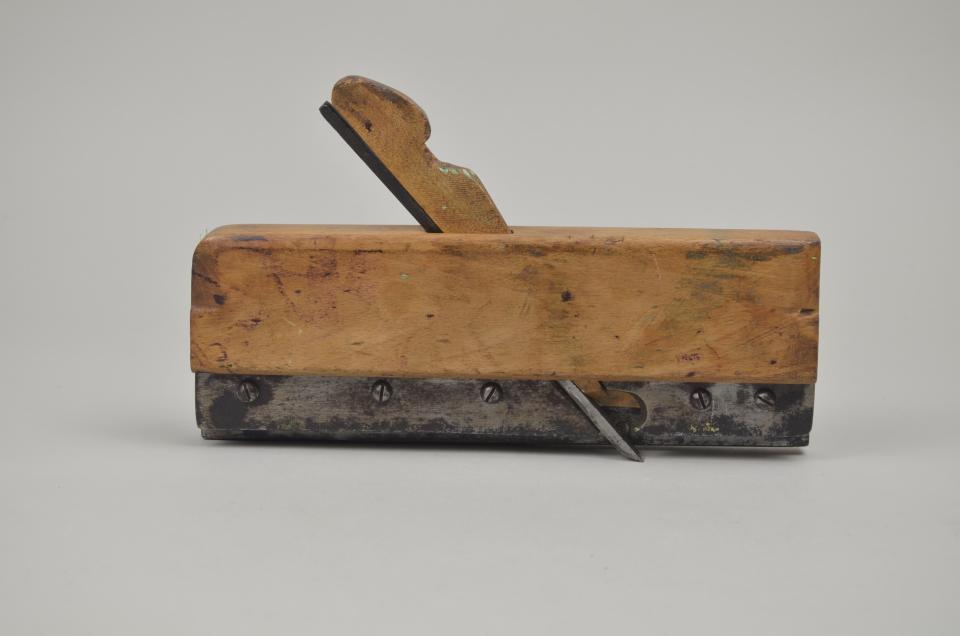
Length 24.2cm x Width 3.5cm x Height 14.7cm
a- Length 24.2cm x Width 3.5cm x Height 8.7cm
b- Length 16.2cm x Width 2.4cm x Height 0.8cm
c- Length 18.8cm x Width 0.5cm x Height 0.5cm
A grooving plane comprised of three parts, a rectangular wooden body with two metal portions on the sole to form the grooving profile (a), a wooden wedge that tapers to a point at the bottom and is rounded at the top (b), and an iron with an angled blade at the bottom (c). The wedge and the iron fit together inside of an angled cutout through the middle of the plane's body portion, and the wedge holds the iron in place as it cuts the wood below. Stamped on the toe of the plane is "I BLOWER", and "A. MONTY." followed by three star symbols, and then "ROXTON POND. P. Q." Stamped on the heel is "7/3", "I BLOWER", "7 5", "1", and "R. WESTLEY". There is also a red label stuck to the heel with the numbers "692", and a small green circular sticker above this.
Grooving planes are used to cut straight grooves, or rabbets, into a working piece. They are traditionally used for drawer bottoms or rear walls. They can be used in conjunction with a corresponding tonguing plane, which creates two parallel slits in a piece of wood. These create two pieces that fit together perfectly for joining work. Other names include dado planes, ploughing planes and matching planes when combined with a tonguing plane.
